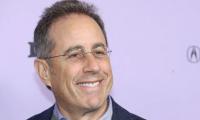KARACHI: Nishat Chunian Power Limited (NCPL) on Monday announced it earned Rs5.578 billion in profit for the year ended June 30, 2019, mainly on strong sales, a statement said on Monday.
The NCPL said this translates into earnings per share (EPS) of Rs16.26, compared to an EPS of Rs15.84 last year when the company had posted a profit of Rs5.471 billion.
The company declared a final cash dividend of Rs2.50/share, equivalent to 25 percent, for the period under review, in addition to an already announced interim cash dividend of Rs1.50/share, equivalent to 15 percent.
The company recorded net sales of Rs39,338 million in FY19, up by 11 percent year-on-year, mainly due to currency depreciation and subsequently higher final product prices.
Gross margins of the company improved by 41 basis points (bps) year-on-year to 12.42 percent during FY19 compared to 12.01 percent in FY18 mainly due to procurement of cotton at economical rates.
In 4QFY19, year-on-year, the gross margins plunged by 605bps to 10.77 percent due to pressure on international cotton prices, which resulted in lower yarn margins.
Other income climbed sharply by 117 percent year-on-year to Rs2,454 million, attributable to dividend received from subsidiary (NCPL) and exchange gain of Rs1.4 billion on account of rupee depreciation by 19 year-on-year.
The statement said the revenue of the company had declined, mainly due to lower demand from NTDC/CPPA (G) (Power Purchaser). Capacity factor for year ended June 30, 2019 was 34.98 percent (2018: 64.14 percent), it added.
According to NCPL, circular debt continued to be an issue and risk for companies operating in the power sector, while Liquidity management remained challenging during the year.
Arif Habib Limited in their analysis said, “Finance costs of the company jumped up by 57 percent year-on-year to Rs2,178 million owing to increase in borrowings to meet the working capital and capex requirement and rise in interest rates”.
The image shows a poster of Syngenta Pakistan's 'CropWise Grower' mobile application. — Syngenta...
The undated image shows the name of the Bank of Punjab written on one its branches. — APP FileKARACHI: The Bank of...
ABHI, a financial technology company, partners with Soorty Enterprises. — Facebook/ProPakistaniKARACHI: ABHI, a...
This representational image shows Gold bars. — AFP/FileKARACHI: Gold prices in the local market dropped by Rs1,600...
A currency exchange dealer counting $100 bills. — AFP/FileAs any old-school currencies trader will tell you: buy...
A Pakistan International Airline aircraft takes off in this undated picture. — Radio Pakistan/FileLAHORE: We have...







